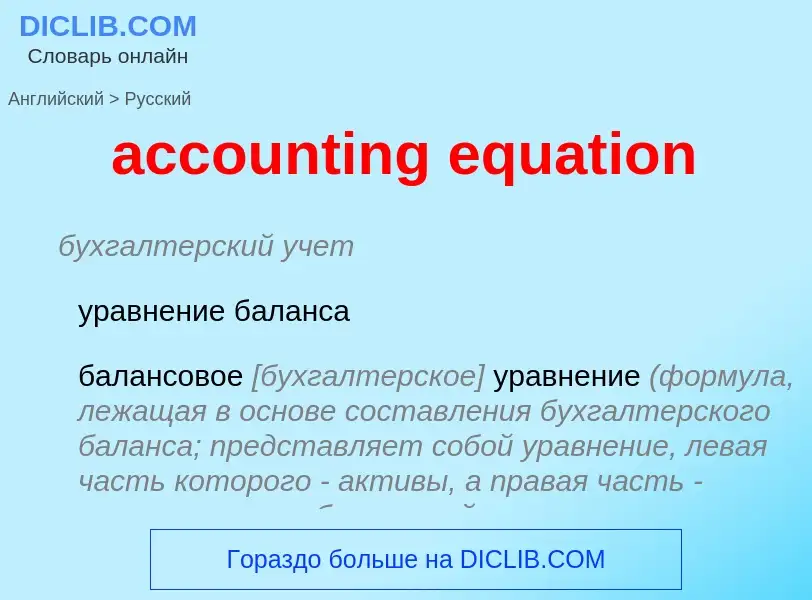Traduzione e analisi delle parole tramite l'intelligenza artificiale ChatGPT
In questa pagina puoi ottenere un'analisi dettagliata di una parola o frase, prodotta utilizzando la migliore tecnologia di intelligenza artificiale fino ad oggi:
- come viene usata la parola
- frequenza di utilizzo
- è usato più spesso nel discorso orale o scritto
- opzioni di traduzione delle parole
- esempi di utilizzo (varie frasi con traduzione)
- etimologia
accounting equation - traduzione in Inglese
бухгалтерский учет
уравнение баланса
балансовое [бухгалтерское] уравнение (формула, лежащая в основе составления бухгалтерского баланса; представляет собой уравнение, левая часть которого - активы, а правая часть - пассивы плюс собственный капитал, т. е., согласно данной формуле, общая стоимость активов равняется сумме обязательств и собственного капитала)
контировка (бухгалтерское выражение операции: отображение коммерческой сделки в виде проводок по дебиту и кредиту)
синоним
Смотрите также
Смотрите также
Definizione
Wikipedia
The fundamental accounting equation, also called the balance sheet equation, represents the relationship between the assets, liabilities, and owner's equity of a person or business. It is the foundation for the double-entry bookkeeping system. For each transaction, the total debits equal the total credits. It can be expressed as furthermore:
In a corporation, capital represents the stockholders' equity. Since every business transaction affects at least two of a company's accounts, the accounting equation will always be "in balance", meaning the left side of its balance sheet should always equal the right side. Thus, the accounting formula essentially shows that what the firm owns (its assets) has been purchased with equity and/or liabilities. That is, with funds it has borrowed and therefore owes (its liabilities) plus funds invested by the founding shareholders (its shareholders' equity or capital); note that the profits earned by the company ultimately belong to its owners.
The formula can be rewritten:
- Assets − Liabilities = (Shareholders' or Owners' Equity)
Now it shows owners' equity is equal to property (assets) minus debts (liabilities). Since in a corporation owners are shareholders, owner's equity is called shareholders' equity. Every accounting transaction affects at least one element of the equation, but always balances. Simple transactions also include:
These are some simple examples, but even the most complicated transactions can be recorded in a similar way. This equation is behind debits, credits, and journal entries.
This equation is part of the transaction analysis model, for which we also write
- Owner's equity = Contributed Capital + Retained Earnings
- Retained Earnings = Net Income − Dividends
and
- Net Income = Revenue − Expenses
The equation resulting from making these substitutions in the accounting equation may be referred to as the expanded accounting equation, because it yields the breakdown of the equity component of the equation.
- Assets = Liabilities + Contributed Capital + Revenue − Expenses − Dividends


